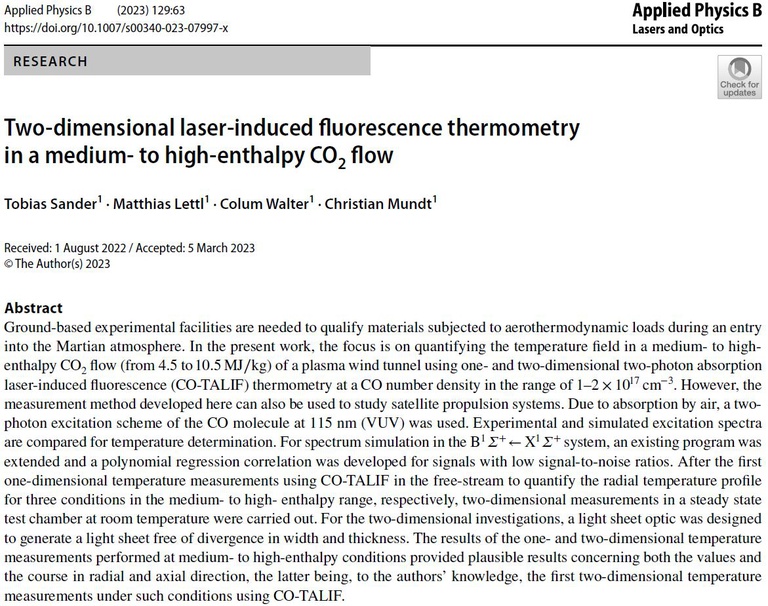
https://doi.org/10.1007/s00340-023-07997-x
5. März 2023
This paper was chosen as this month’s Article Highlight for Applied Physics B. The announcement can be found on the journal’s update page:
https://www.springer.com/journal/340/updates/19548102
A plasma wind tunnel (PWT) is operated at the Institut für Thermodynamik at the Universität der Bundeswehr München to qualify materials that are exposed to high aerothermodynamic loads when entering the Martian atmosphere. For the use of such test facilities, it is essential to quantify the flow conditions as precisely as possible in order to obtain reliable data for the numerical simulation.
The non-intrusive optical measurement method laser-induced fluorescence (LIF) is characterized by high signal intensity even at low particle densities and, in principle, also when the laser beam is expanded to form a light sheet. To measure the temperature field present in the CO2 free-stream of the PWT for three conditions in the medium- to high-enthalpy range (5.0 MJ/kg to 10.5 MJ/kg), respectively, one- and two-dimensional two-photon absorption laser-induced fluorescence (CO-TALIF) thermometry was used in the present work at a CO number density in the range of 1-2 × 1017 cm−3. To perform these measurements, a light sheet optic consisting of three lenses was designed to generate a light sheet free of divergence in width and thickness and with an energy density sufficient for a quantitative evaluation despite the quadratic dependence of the signal strength on the excitation energy.
Instead of two- or multiline thermometry, a direct comparison of experimental with simulated excitation spectra was performed, so that the shape of the entire spectrum in a defined spectral region was considered. To simulate the temperature dependent excitation spectrum of the B–X(0,0) vibrational band of the CO molecule for two-photon excitation, an existing in-house tool was extended and the CO Excitation Spectrum Calculation (COESC) program was created. The measurement results obtained are described in this paper.